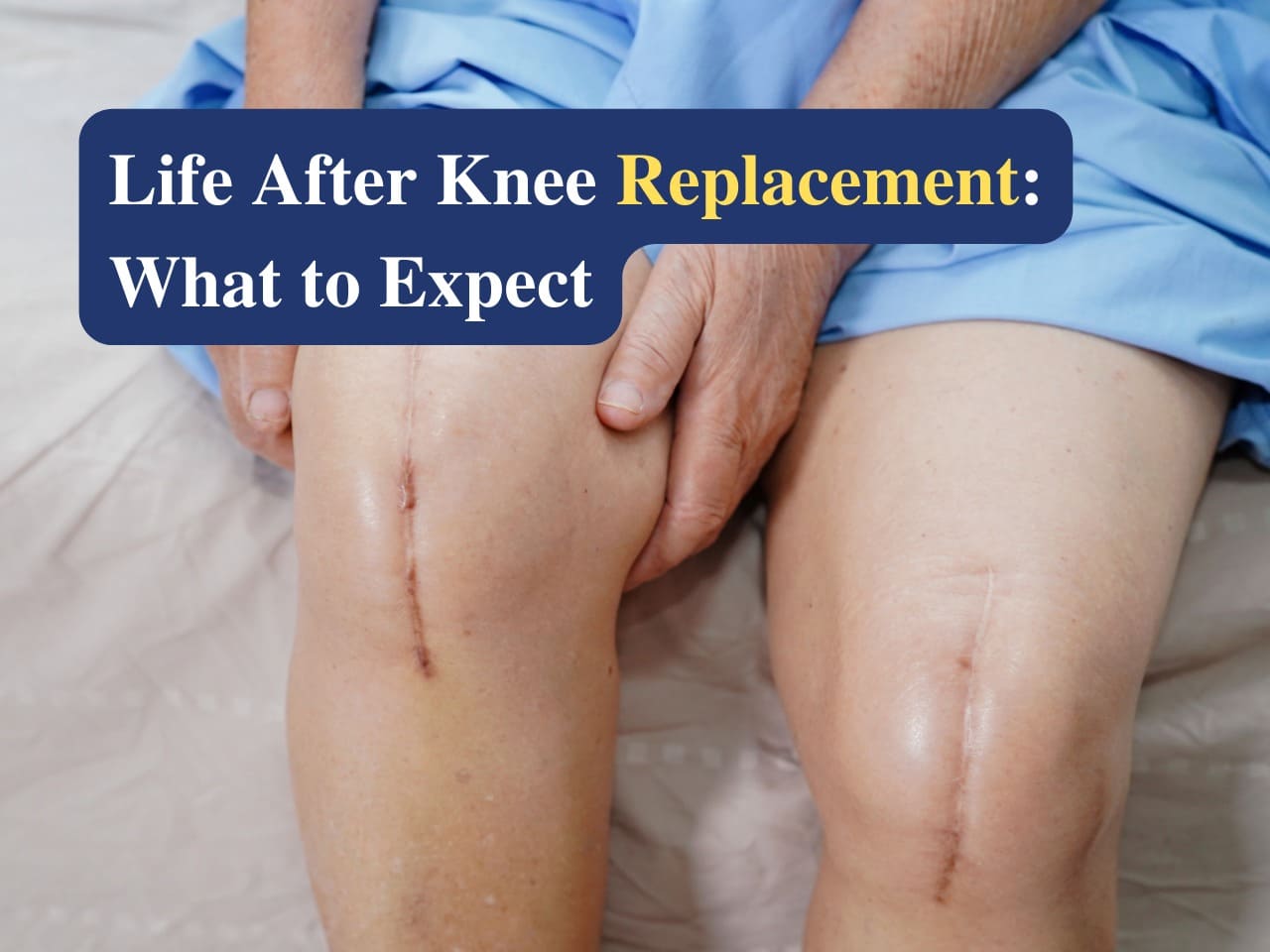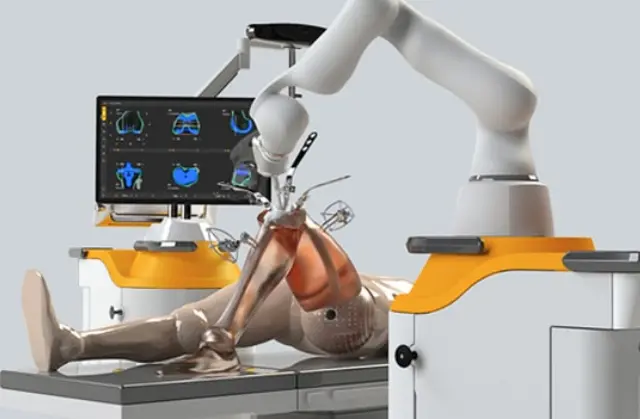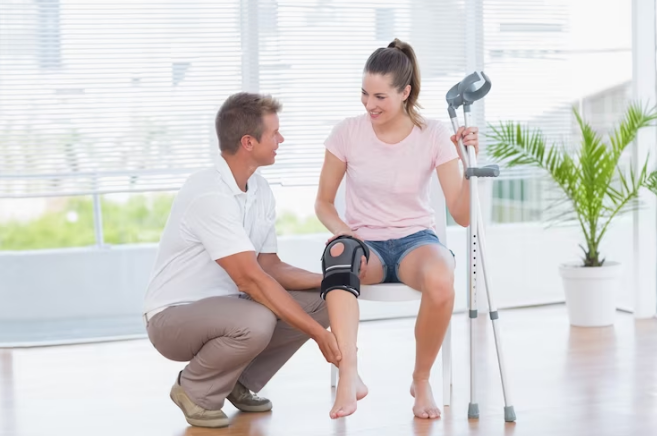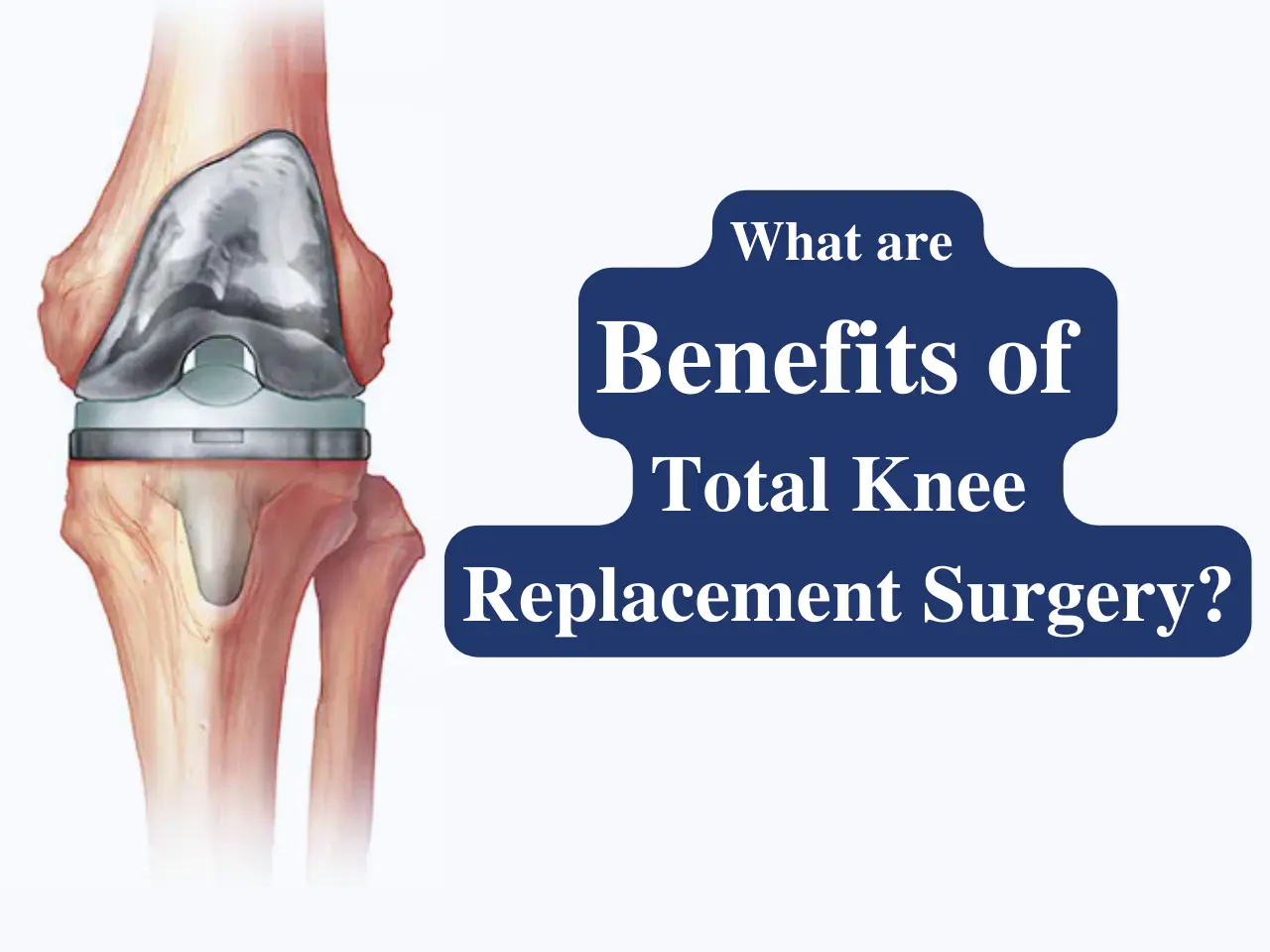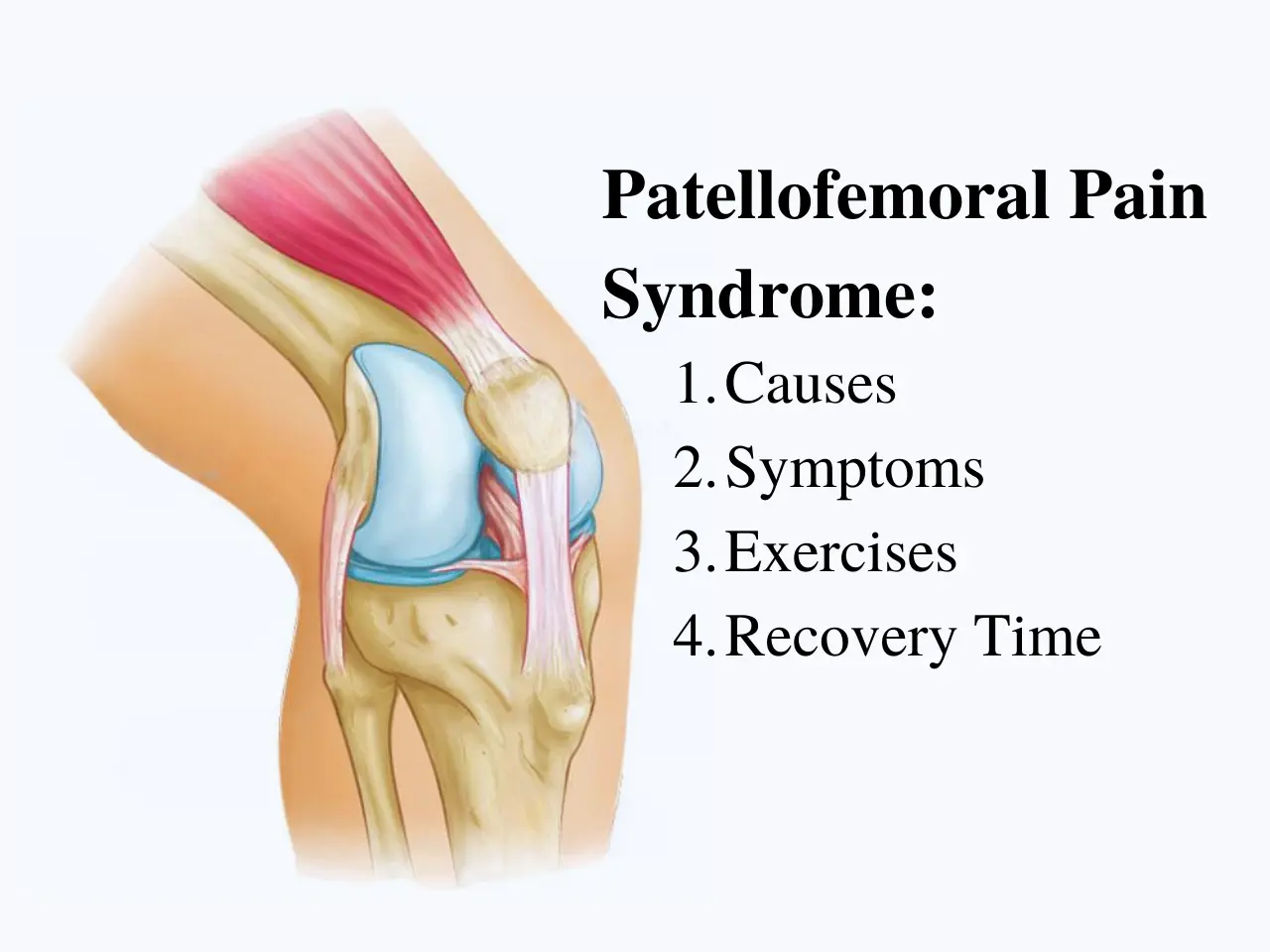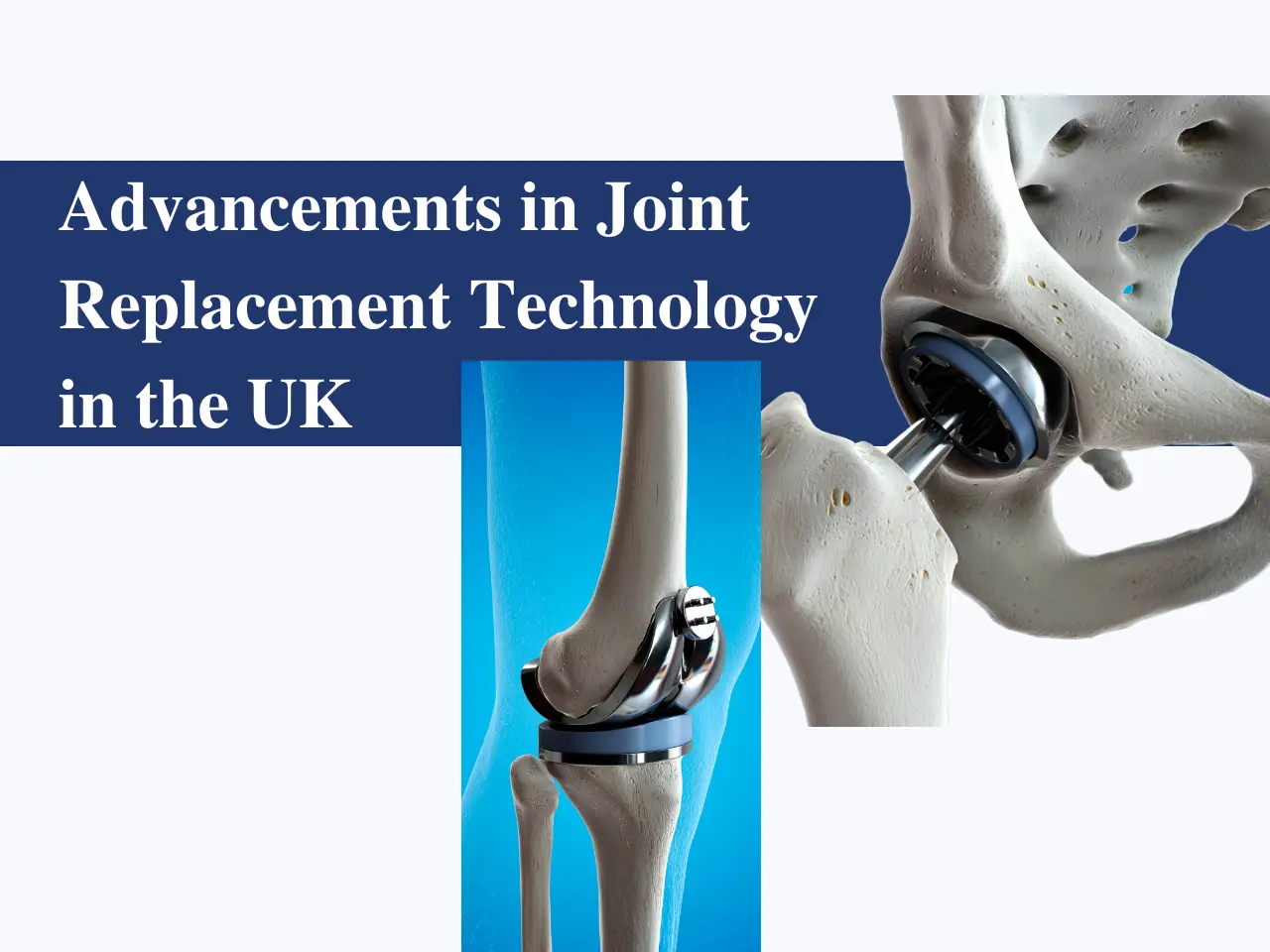Knee replacement surgery, also known as knee arthroplasty, is a common procedure designed to relieve pain and restore function in patients with severe knee joint damage.
It can significantly improve quality of life by allowing individuals to engage in activities that may have been difficult or impossible due to chronic knee pain.
Prof. Nikhil Pradhan, a Senior Orthopaedic Consultant with over 30 years of experience in hip, joint, and knee surgery, is dedicated to ensuring the best possible outcomes for his patients.
Understanding what to expect post-surgery is crucial for a smooth recovery and successful long-term results.
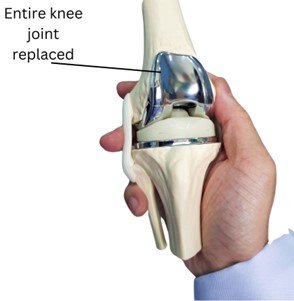
Immediate Post-Surgery Period
Initial Recovery Phase
The initial recovery phase begins as soon as the surgery is completed and continues during the first few weeks at home. Pain management is an essential part of this period to ensure comfort and facilitate early mobility.
Patients are usually prescribed pain relievers and advised on techniques such as ice application to reduce swelling and discomfort.
Key considerations for this phase include:
- Rest and Limited Movement: Resting the knee and limiting movement is critical to allow initial healing.
- Common Physical Sensations: Swelling, bruising, and mild discomfort are common and can be managed with medication and physical aids like crutches.
Hospital Stay and Discharge
The typical hospital stays following knee replacement surgery can last from 1 to 3 days, depending on the patient’s health and surgical outcomes.
Early mobility efforts, such as assisted walking and gradual weight-bearing exercises, help prevent complications like blood clots and improve circulation.
Preparing for home recovery involves:
- Arranging for physical therapy.
- Ensuring the home is set up for easy mobility (e.g., placing items within reach, having supportive seating).
Life After Knee Replacement Surgery: What to Expect
Returning to Daily Activities
One of the most important aspects of life after knee replacement surgery is resuming daily activities gradually and safely.
- Walking After Knee Replacement: Initially, patients will start with short walks using a walker or crutches. Over time, walking distance can increase as strength and stability improve.
- Activities After Total Knee Replacement: Low-impact activities such as light stretching, swimming, and gentle yoga can help maintain mobility without overstraining the knee.
Permanent Restrictions After Knee Replacement
While knee replacement surgery can greatly enhance function, it is important to understand permanent movement restrictions to protect the knee joint.
- Activities to Avoid After Knee Replacement: High-impact activities like running, jumping, and heavy lifting should be avoided to prevent damage to the prosthesis.
- Movement Limitations: Patients should be mindful of not overexerting themselves and should aim for balanced activity levels.

Exercises After Knee Replacement
Importance of Exercise for Recovery
Exercise is vital for a successful recovery, aiding in the restoration of strength, flexibility, and overall knee function. Regular physical activity enhances circulation, reduces stiffness, and supports muscle rebuilding around the knee joint.
Recommended Exercises for Knee Replacement Patients
- Low-Impact Exercises: Gentle stretches, leg lifts, and resistance band exercises can improve flexibility and muscle tone without undue stress on the knee.
- Strengthening Exercises: Building strength in the quadriceps, hamstrings, and calf muscles helps support the knee joint.
- Safety Tips for Performing Exercises: Always consult a physical therapist or orthopaedic specialist, like a knee replacement surgeon in Cheshire, before starting any new exercise routine to ensure safety.
Mental and Emotional Well-being
Coping with the Recovery Journey
Recovery can be physically and emotionally demanding. Managing expectations and understanding that progress can be gradual helps maintain a positive outlook.
Support Systems: Engaging family and friends for encouragement and seeking professional mental health support if needed can aid in emotional well-being.
Life After Knee Replacement at 55 and Beyond
Recovery and activity levels can vary depending on age and individual health.
- Adjustments to Lifestyle: Patients over 55 may need to adapt their activities to maintain joint health while avoiding stress on the new joint.
- Age-Specific Recovery: While younger patients may regain full activity more quickly, those over 55 should focus on safe, low-impact activities and regular check-ups.
Long-term Considerations and Health Monitoring
Routine Check-Ups with Your Knee Replacement Surgeon
Regular follow-up appointments with your knee replacement surgeon in Cheshire are vital for assessing joint function and overall progress.
- Monitoring Joint Health: Ensuring the knee is healing correctly and that the prosthesis is functioning as intended.
Signs of Complications and When to Seek Help
It is important to know when to seek medical advice. Signs of potential complications include:
- Excessive swelling that doesn’t subside.
- Persistent pain or limited mobility.
- Redness or unusual warmth around the joint.
Consulting with a knee replacement surgeon in Cheshire for professional guidance and care can prevent potential issues.
Conclusion
Life after knee replacement surgery can be both fulfilling and challenging. By adhering to medical advice, engaging in safe activities, and maintaining a positive mindset, patients can look forward to a rewarding recovery and an improved quality of life.
If you are considering knee replacement surgery or are in the recovery phase, reach out to Prof. Nikhil Pradhan for expert guidance and comprehensive care.
For more resources and additional articles on knee replacement recovery tips and recommended exercises, visit our website or contact us today.

